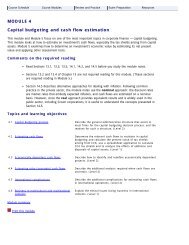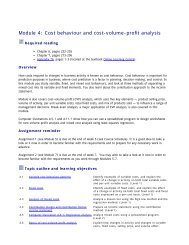Module 6: Capital gains and losses - PD Net
Module 6: Capital gains and losses - PD Net
Module 6: Capital gains and losses - PD Net
You also want an ePaper? Increase the reach of your titles
YUMPU automatically turns print PDFs into web optimized ePapers that Google loves.
Disposition costs<br />
When capital property is sold, various costs can be incurred for the purpose of selling the property <strong>and</strong> as a<br />
result of its sale. These amounts, along with the ACB of the property, are deducted from the proceeds of<br />
disposition (POD) in calculating the gain or loss [subparagraph 40(1)(a)(i)]. There is no definition of disposition<br />
costs in the ITA. If these costs are not otherwise deductible in computing income <strong>and</strong> are incurred for the<br />
disposition of the property, the items are deducted from the POD to calculate the gain or loss.<br />
Example<br />
Guylaine Doyon disposed of a non-depreciable capital property that was used to earn business income. That<br />
property was disposed of for $10,000. The selling costs totalled $500 <strong>and</strong> the original cost of the property for<br />
Guylaine was $4,000.<br />
POD $10,000<br />
Less: Cost of property $4,000<br />
Selling expenses 500 (4,500)<br />
Gain $5,500<br />
As the property disposed of was a non-depreciable capital property, the amount of the gain under section 40 is<br />
equal to the capital gain under section 39.<br />
Activity 6.3-1 — Taxable capital <strong>gains</strong><br />
In this activity, you calculate the taxable capital gain for a non-depreciable capital property.<br />
LEVEL 3<br />
Cost of assets owned on December 31, 1971<br />
The rules for calculating capital <strong>gains</strong> for property held on December 31, 1971 differ depending on whether or<br />
not the capital property in question is depreciable. On disposition of a depreciable capital property acquired<br />
before 1972, the median rule does not apply. Instead, under ITAR 20(1), if the capital cost of the depreciable<br />
property is less than both the FMV on valuation-day (V-day) <strong>and</strong> the POD, the POD is deemed to be the total<br />
of the capital cost of the property <strong>and</strong> the POD less FMV on V-day. The capital gain is therefore calculated<br />
using the deemed POD.<br />
LEVEL 1<br />
Gains reserve<br />
For individuals, the prescribed Form T2017, Summary of Reserves on Dispositions of <strong>Capital</strong> Property, must be<br />
filed to claim a capital <strong>gains</strong> reserve. The (b) portion for the reserve formula may be restated as:<br />
in the year of disposition:<br />
first year after disposition:<br />
second year after disposition:<br />
third year after disposition:<br />
fourth year after disposition:<br />
4/5 of the capital gain<br />
3/5 of the capital gain<br />
2/5 of the capital gain<br />
1/5 of the capital gain<br />
nil<br />
Thus, whatever the unpaid balance of the selling price, at least one-fifth of the capital gain must be recognized<br />
in each year the reserve is claimed on a cumulative basis.<br />
file:///F|/Courses/2010-11/CGA/TX1/06course/m06t03.htm[11/10/2010 4:41:58 PM]


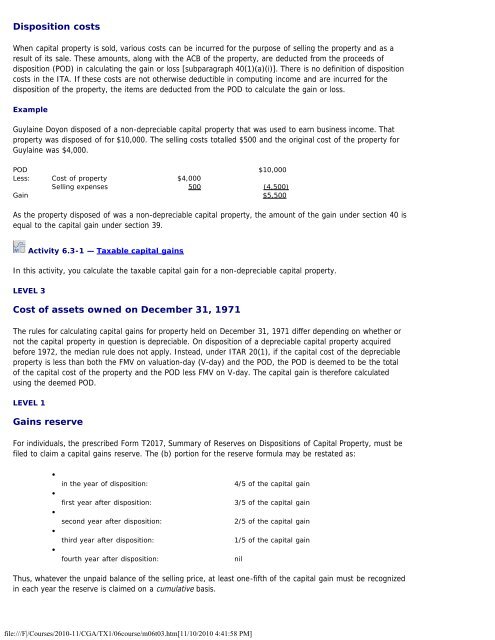
![Management Accounting Fundamentals [MA1]: Module 10 ... - PD Net](https://img.yumpu.com/51417019/1/190x245/management-accounting-fundamentals-ma1-module-10-pd-net.jpg?quality=85)
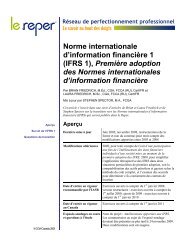


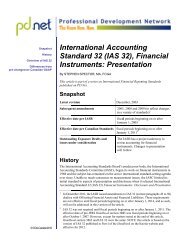
![Managing Information Systems [MS1]: Module 5 course notes - PD Net](https://img.yumpu.com/49314445/1/190x245/managing-information-systems-ms1-module-5-course-notes-pd-net.jpg?quality=85)

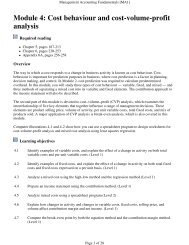
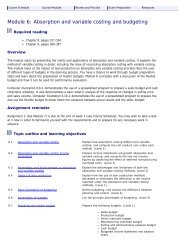

![Financial Accounting - Assets [FA2]: Module 9 course notes - PD Net](https://img.yumpu.com/47639890/1/190x242/financial-accounting-assets-fa2-module-9-course-notes-pd-net.jpg?quality=85)
![Introduction to Personal & Corporate Taxation [TX1] - PD Net](https://img.yumpu.com/46673907/1/190x245/introduction-to-personal-corporate-taxation-tx1-pd-net.jpg?quality=85)

